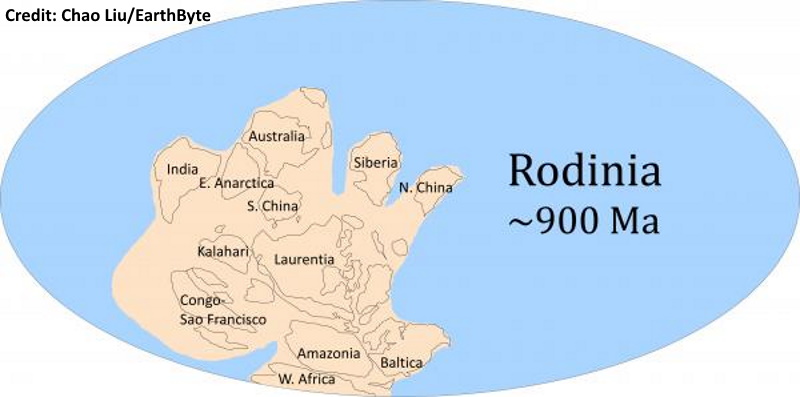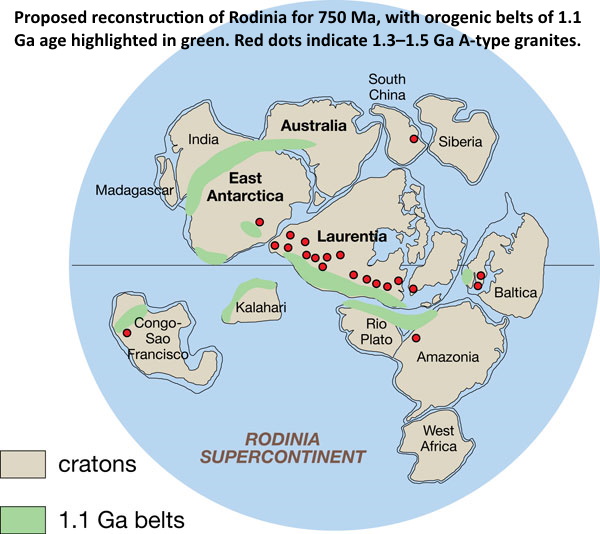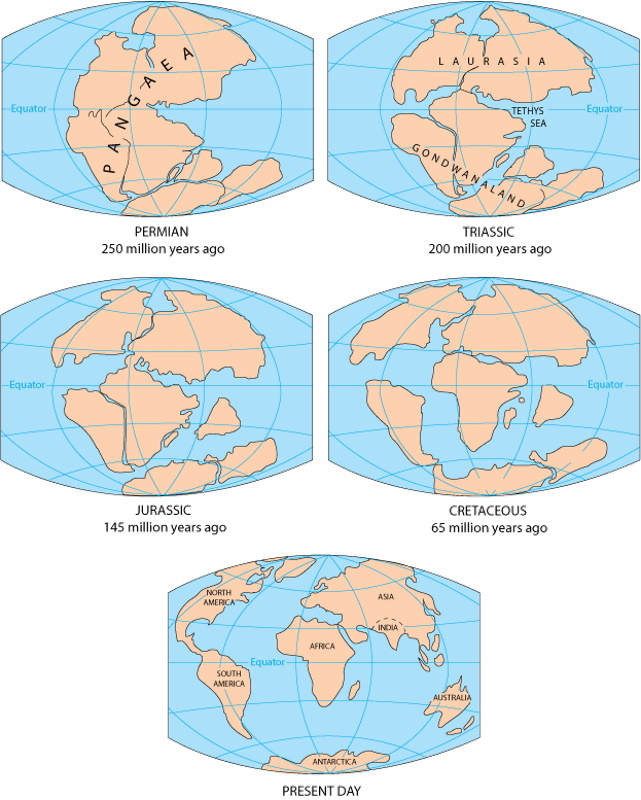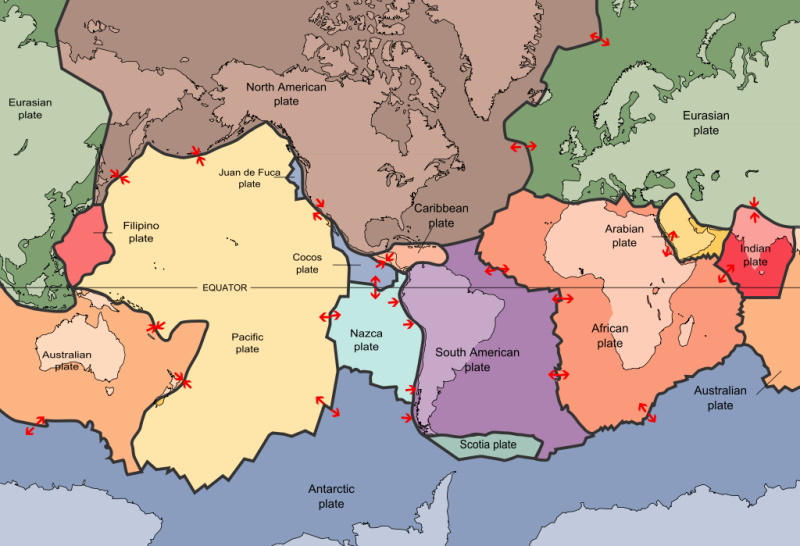Post by 1dave on Jan 5, 2022 9:40:39 GMT -5
4.5 Billion years ago it appears the earth was a molten mass, being gravitationally differentiated - heavy elements going to the core, light elements going to the crust.
EDIT: Note the red to yellow Density Arrow on the right side of the chart below!
Above the core, a molten less dense layer called the lower mantle has formed. Floating on it is the semi-solid even less dense upper mantle material that supports the light hard planet crust.
Early on another planet sideswiped earth, knocking off 70% of the crust, creating ocean space and the moon.
The remaining 30% of shattered crust pieces have been drifting about ever since. Those bits are called tectonic plates. They are the least dense, rocky, solid outer shell of the planet. Between them is a distinctly different type of material: the more-dense oceanic crust.
Geologists have hypothesized that the movement of tectonic plates is related to convection currents in the earth’s mantle. Convection currents describe the rising, spread, and sinking of gas, liquid, or molten material caused by the application of heat. On a stove, hot water rises in a pan at the point where heat is applied. The hot water moves to the surface, then spreads out and cools, then sinks to the bottom.
Personally I doubt there is still that much movement going on in the upper mantle.
However, light elements in the transition zone just below the crust - ocean crust averages 5 miles thick, continent crust averages 30 miles thick - melt at a much lower temperature. This is possibly where the floating happens.

Rodinia 900 Mya

Rodinia 750 Mya

Pangea to the present

Crust A & B

For billions of years oceans have been opening and closing like camera lenses.
Changes in direction take place at the time of massive extinctions that can be equated with huge impacts.
To my mind there lies the power and energy to start a continent on a new path.
EDIT: Note the red to yellow Density Arrow on the right side of the chart below!
Above the core, a molten less dense layer called the lower mantle has formed. Floating on it is the semi-solid even less dense upper mantle material that supports the light hard planet crust.
Early on another planet sideswiped earth, knocking off 70% of the crust, creating ocean space and the moon.
The remaining 30% of shattered crust pieces have been drifting about ever since. Those bits are called tectonic plates. They are the least dense, rocky, solid outer shell of the planet. Between them is a distinctly different type of material: the more-dense oceanic crust.
Geologists have hypothesized that the movement of tectonic plates is related to convection currents in the earth’s mantle. Convection currents describe the rising, spread, and sinking of gas, liquid, or molten material caused by the application of heat. On a stove, hot water rises in a pan at the point where heat is applied. The hot water moves to the surface, then spreads out and cools, then sinks to the bottom.
Personally I doubt there is still that much movement going on in the upper mantle.
However, light elements in the transition zone just below the crust - ocean crust averages 5 miles thick, continent crust averages 30 miles thick - melt at a much lower temperature. This is possibly where the floating happens.

Rodinia 900 Mya

Rodinia 750 Mya

Pangea to the present

Crust A & B

For billions of years oceans have been opening and closing like camera lenses.
Changes in direction take place at the time of massive extinctions that can be equated with huge impacts.
To my mind there lies the power and energy to start a continent on a new path.














